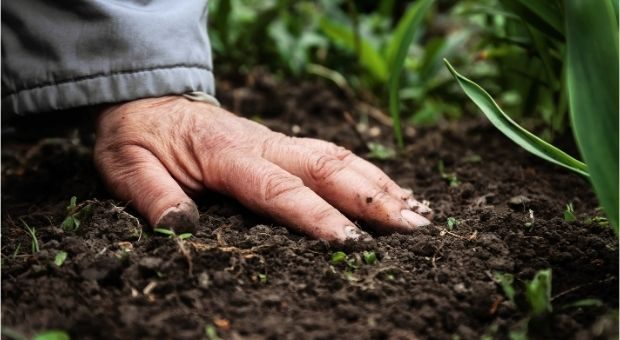24
Feb
Glyphosate and Other Weed Killers Create Antibiotic Resistant Bacteria in Agricultural Soils

(Beyond Pesticides, February 24, 2021) Soil sprayed with weedkillers glyphosate, glufosinate, or dicamba are likely to contain higher amounts of antibiotic resistant bacteria, according to research published earlier this month in the journal Molecular Biology and Evolution. Each year in the United States, at least 2 million people develop an antibiotic resistant infection, and over 23,000 die. Authors of the study say widespread herbicide use is likely playing a role. “Our results suggest that the use of herbicides could indirectly drive antibiotic resistance evolution in agricultural soil microbiomes, which are repeatedly exposed to herbicides during weed control,” said Ville Friman, PhD of the University of York in the United Kingdom.
Scientists began their investigation by looking at changes to soil communities in soil microcosms over the course of a roughly two months. Microcosms were grouped by the herbicide applied, while a control microcosm remained unexposed. Each microcosm had a single herbicide applied at a rate reaching 10 parts per million (ppm) in soil. The researchers replicated each treatment 12 times.
Contrary to the pesticide industry’s claim that these chemicals break down quickly and become inert by binding to soil particles, large proportions of the herbicides remained in the soil at the end of the 60-day experiment, stemming back from the first application. For glyphosate 18% remained, glufosinate 21%, and dicamba 34%.
Although no significant changes to bacterial diversity, abundance, or richness were observed, researchers found that herbicide-exposed soils contained a greater abundance of genes associated with antibiotic resistance, as well as a higher number of mobile genetic elements. Mobile genetic elements are genetic material which can move within genomes or be transferred from one species to another.
Delving deeper to discover the mechanistic process selecting for antibiotic resistance, scientists determined that herbicide exposure triggers evolutionary pressures on bacteria similar to those exposed to antibiotics. Previous research published in mBio in 2015 found similar results. Salmonella and E.coli exposed to the herbicides glyphosate, dicamba, and 2,4-D, triggered a non-specific defense mechanism which, while building resistance to the toxic effects of the herbicides, also resulted in resistance to commonly used antibiotics.
Looking further into the process, scientists in the present study found that bacteria in herbicide-exposed soils were likely to have damaged cell membranes and increased cell membrane permeability. This finding corresponds with a higher propensity for horizontal gene transfer of antibiotic resistant genes.
“Interestingly, antibiotic resistance genes were favoured at herbicide concentrations that were not lethal to bacteria,” said Dr. Friman. “This shows that already very low levels of herbicides could significantly change the genetic composition of soil bacterial populations. Such effects are currently missed by ecotoxicological risk assessments, which do not consider evolutionary consequences of prolonged chemical application at the level of microbial communities.”
After the initial application, the prevalence of antibiotic resistant genes increased steadily over the 60-day experiment. While each herbicide was found to act on different bacteria, glyphosate was found to have the largest contribution towards the development of antibiotic resistant strains.
While it is one thing to observe these changes in a laboratory setting, real world observations can help drive home the importance of these findings. Researchers thus sampled 21 sites across 11 Chinese provinces where either no herbicides had been used for 5 years, or glyphosate had been applied constantly for the last ten years. Samples matched up closely to the results of the microcosm experiment: high abundances of antibiotic resistance genes and mobile genetic elements were observed and correlated positively with each other in herbicide exposed soils.
It is past time for herbicides and other agricultural pesticides to be part of the conversation around antibiotic resistance. “While antibiotic resistance genes are not harmful per se, they will reduce the efficiency of antibiotics during clinical treatments,” said Dr. Friman. “Keeping the frequency of resistance genes low will hence prolong the long-efficiency of antibiotics. As resistance genes can easily move between environments, agricultural fields could be globally important source for resistance genes”
Beyond Pesticides is challenging the registration of chemicals like glyphosate in court due to their impacts on soil, air, water, our own health and the ecosystems we depend upon. While legal battles press on, work to support an agricultural system to has eliminated the use of toxic synthetic herbicides and the myriad of problems they cause. Buy food which never allows the use of glyphosate, glufosinate, or dicamba by purchasing organic whenever possible.
All unattributed positions and opinions in this piece are those of Beyond Pesticides.
Source: University of York, Molecular Biology and Evolution










